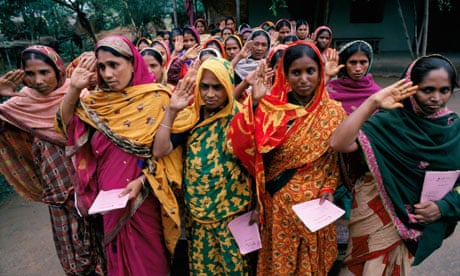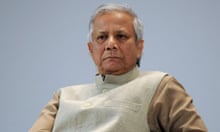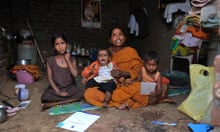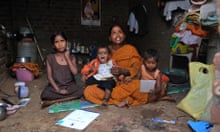Having been hailed as a magic solution to poverty for more than a decade, the enemies and sceptics of microfinance are now having a field day. I blogged before Christmas about the crisis in the microfinance sector in Andhra Pradesh. That story of indebtedness and high rates of defaulting was extensively reported in the west and shook the reputation of the entire sector; my colleague in India filed a moving report of the fall-out on poor families earlier this week. Similar reports were on the BBC, bringing unusual attention to what has been, up until now, largely a passion of development policy wonks. But now it looks as if the crisis of faith in microfinance threatens the whole concept as a development tool – and even worse, its founding pioneer, the Nobel laureate Mohammed Yunus himself.
Alongside the crisis in India, another attack has been brewing; a Danish investigative journalist, Tom Heinemann, has made a film looking at microfinance and Yunus's Grameen bank in Bangladesh. In addition to the now well-known criticisms of heavy-handed debt collection and high rates of interest and indebtedness, Heinemann has uncovered a complex financial transaction in the early 1990s at Grameen bank. He says a significant sum of money is unaccounted for. He insists he has no evidence of any corruption, but he does have documentation that the donor, the Norwegian government aid agency, was very cross but agreed to keep quiet on the issue.
A version of the film was broadcast in Norway in late November and caused uproar in Bangladesh (when it appeared in Norwegian on YouTube). The Bangladeshi prime minister, Sheikh Hasina, weighed into the row in a press conference calling for an investigation into the Grameen bank – which received millions in aid from several western countries in the early 1990s. She declared that the Grameen bank had been "sucking money out of the people after giving them loans. There has been no improvement in the lifestyle of the poor so far. They were just used as pawns to get more aid."
Earlier this week, a longer version of the film was broadcast in Denmark, despite last-minute representations by the public relations company Burson-Marsteller, which had been hired by Grameen bank. Clearly Yunus is fighting hard to protect his reputation.
Meanwhile Heinemann's main aim is not to expose the feet of clay of this global icon of the struggle against poverty so much as to challenge the western donors' naive enthusiasm for microfinance.
"I admit, the film shows for the first time the dark side of microcredit," Heinemann told me from Denmark, where he is coping with the growing global row. "I went to a number of experts and asked them, does microfinance alleviate or eradicate poverty? None of them could give me a clear answer. Several say there is no real impact or that we need more research to know. At the same time, I could see loads of websites of aid agencies claiming huge success. I couldn't make these two things match. The more I talked to people, the more astonished I was at the mass hype."
A number of longstanding critics of microfinance, such as Milford Bateman, are interviewed in Heinemann's film as well as those who are more supportive, such as David Roodman at the Center of Global Development in the US. The latter has put up a series of really thoughtful blogs on the growing dispute and his own criticisms of Heinemann's film.
In the meantime, Heinemann is planning to get the film shown, finally, in Bangladesh later this month, and next month there will be the first viewing in London after the Overseas Development Institute cancelled one this week at short notice – because, rather oddly, it claimed it couldn't find anyone to put up against Heinemann.
The fact is that Heinemann's film offers some very inconvenient truths about microcredit at a time when it has become a widespread orthodoxy among donors that this was one of the best ways to help the poor help themselves. When aid is increasingly being criticised as a "handout" and scorned for generating dependency, microfinance had a powerful appeal as an alternative. The rhetoric of microfinance – and everyone has used similar stories of people pulling themselves out of poverty by setting up small businesses – ticked all the donors' boxes for self reliance and empowerment.
But it sidestepped the structural economic and political causes for people's poverty in the first place, putting all the emphasis on individual effort and resourcefulness to break out – an impossible expectation that has led to much further suffering.
Having said that, there is a place for well-designed, carefully managed microfinance projects and it would be a disaster if the growing backlash swept all away. This is a reality check, long overdue and a reminder of just how vulnerable donors are to fashionable orthodoxies.




Comments (…)
Sign in or create your Guardian account to join the discussion